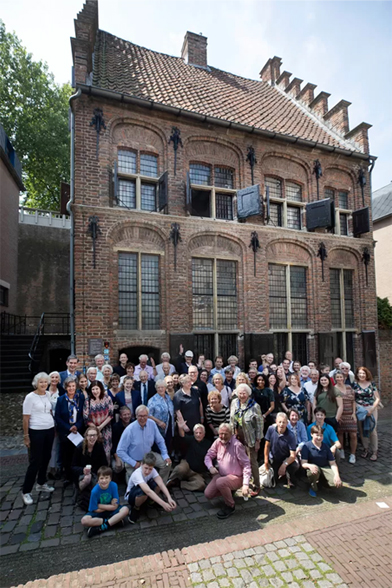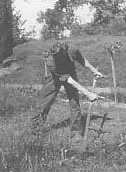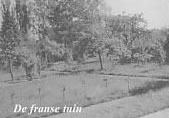Articles taken from De Colve XII – 2007: Kolffs at Naarden (2nd article)

The Kolffs at Naarden, by Gijs Kolff (CBCA XVIIp)
 In the 1930’s and 1940’s the Amersfoortsestraatweg at Naarden and its surrounding areas consisted of numerous country-seats and estates. Even today it is a beautiful area that got its character through dig offs: the sand was transported mainly to Amsterdam and on the remaining grounds the area got its character with several nurseries.
In the 1930’s and 1940’s the Amersfoortsestraatweg at Naarden and its surrounding areas consisted of numerous country-seats and estates. Even today it is a beautiful area that got its character through dig offs: the sand was transported mainly to Amsterdam and on the remaining grounds the area got its character with several nurseries.

My grandfather Van Dorp came from a house just outside Rotterdam, this house had the name Rubroeck. Together with my grandmother née Holtzman he owned a small summerhouse at Naarden which was named Klein-Rubroeck. They lived at Amsterdam at Herengracht 170, a house now famous as the Bartolottihuis, and every year during the summer the family moved to Klein Rubroeck. Later they decided to go and live there and so, in 1910, they had the villa Klein-Rubroeck built. Today one finds here a service flat named Bosch van Bredius, a name that we cannot get used to because it is misleading. The beautiful garden that still exists will, for us, always be connected to the name of Rubroeck. The name lives on because my sister Margriet and her husband (Kolff-Henny from Wassenaar) have named there house there: Nieuw-Rubroeck.

After my grandparents died it was decided to keep the house in the family and use it for instance during summer holidays. I lived at Rotterdam at the Westerstraat and in May, 1940, I could see – sitting on the doorsteps of my uncle’s house at the Westersingel, how my family’s home got destroyed. We were lucky to still have Klein-Rubroeck were we moved to as a family. We grew vegetables and kept several animals, such as chickens, goats, cats, dogs, and rabbits. A great time for us.

The house with its many windows was light and hospitable: everybody was welcome! Because of the many family members and their children visiting I always had someone to play with. I remember board-tennis, soccer on the large greens, and more. Because of the occupation and the following events I worked often in the gardens. I those years a lot of men from Huizen worked on the estates and in the nurseries, and from them I learnt a lot of the real handwork on the grounds. The houses can only be seen in connection with all those that worked the grounds over the years. The garden around the first, older house we called ‘the old garden’. had limetrees that today still stand there. The then new garden had a French lay-out, with rose beds and straight paths, a beautiful, spacious garden.

Klein-Rubroek, often referred to as, Rubroeck, was built in 1910 by the architect Rueber. It has been demolished in 1960.

Gijs H. Kolff (CBCA XVIIp)
| For your information, this article is available in full at the Dutch pages: Kolffen in Naarden. |